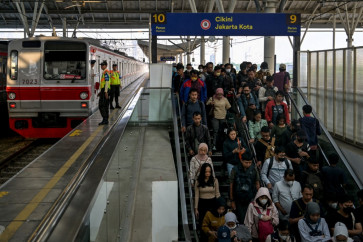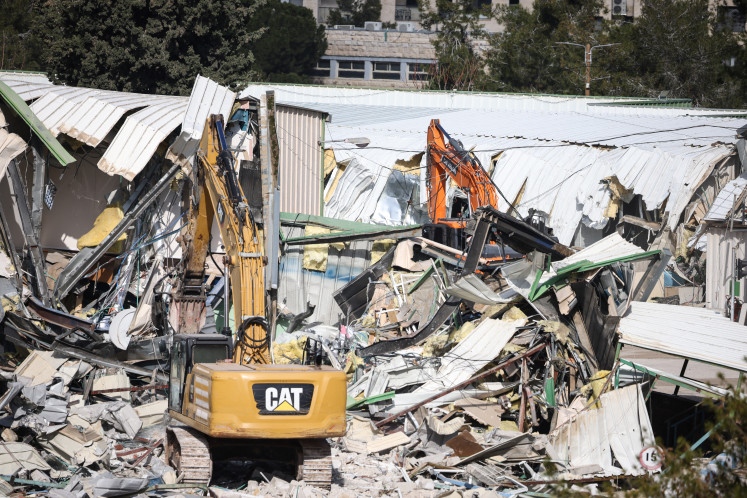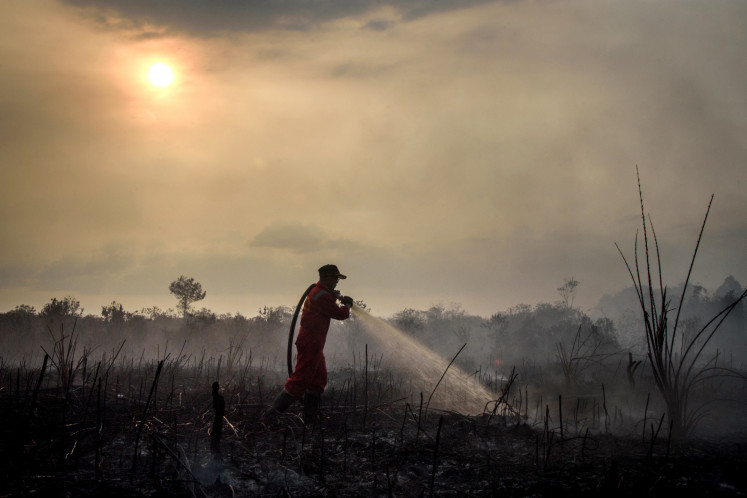Popular Reads
Top Results
Can't find what you're looking for?
View all search resultsPopular Reads
Top Results
Can't find what you're looking for?
View all search resultsA deeper look into the recent elections in Aceh
On the ninth of April 2009, Indonesia held its third set of legislative elections since the collapse of Soeharto's New Order
Change text size
Gift Premium Articles
to Anyone
O
n the ninth of April 2009, Indonesia held its third set of legislative elections since the collapse of Soeharto's New Order. Numerous political sagas continue to unfold, including concerns over the implications of the first legislative elections in post-conflict Aceh.
The core compromises leading to the Helsinki Agreement were that the Free Aceh Movement (GAM) would drop its demand for independence in exchange for substantive autonomy and the right to organize as a political party.
Through its powerful Transition Committee, the former rebels formed Partai Aceh (PA). PA quickly became visible throughout the province, symbolized by their variation of the GAM flag. Along with PA, five other local parties were also established.
In the months leading up to Aceh's elections, there were numerous instances of violence, mostly against PA leaders. There was a great deal at stake in Aceh's elections for the province and the country. Would a Partai Aceh victory signal a renewed call for separatism?
There were four elections held in Aceh on April 9 for the Regional Representatives Council (DPD), the provincial legislature (DPR-A), district and city legislatures (DPR-K), and the House of Representatives (DPR-RI). The DPD elections were the least politically charged of the four. Candidates ran as individuals, campaigning more on ethnic cues than platforms for these largely symbolic positions.
The DPR-A and DPR-K elections have received the most attention, the two races featuring local political parties.
Though the results continue to trickle in, it is clear that, using the organizational machine of the former rebels, Partai Aceh dominated.
Local parties did not win these elections, the PA did; early returns suggest that other local parties won between 0.7 to 2.3 percent of the popular vote.
Several parties, including other local ones, have reported PA intimidation at the polls. There is little doubt that PA dominance is partially owed to intimidation by former GAM members and funding from grey-market construction contracts. But even with these significant shortcomings, there can be no doubt that the election was a resounding indicator of continued rebel popularity in much of Aceh.
However, this does not mean that the election as a whole went the way PA wanted, and it does not translate into a mandate for separatism. Looking at district results, one finds the emergence of distinct voting blocs.
PA dominated in the north and west coasts, which are the most densely populated, which accounts for PA's strong polling in the provincial aggregate. And, not coincidentally, the coastal regions are the most ethnically homogeneous. But some contests remain too close to call.
In Aceh Besar and the two races in the southeast, PA looks to a whisker ahead of President Yudhoyono's Partai Demokrat (PD). A third cluster saw PD defeat PA in local elections.
In the capital city of Banda and Sabang Island, PD gained more votes than PA in both sets of local elections. PD also appears to have defeated PA in three highland districts, with Golkar victorious in Bener Meriah, and PD also looks to have won the all three pairs of elections in the southwest corner of the province.
So while the populous north and west coasts supported PA with extreme devotion, the northwest, centre, and south of the province did not. Ethnically diverse provinces were either divided or supported Indonesian parties.
Beyond the regional variation in support for Partai Aceh, a second story which has not received much attention thus far concerns the party which placed second.
Disregarding a long-standing local tradition, Acehnese voters did not vote for Islamic parties, nor did they support Golkar. In all but two DPR-A and DPR-K contests, President Yudhoyono's Partai Demokrat (PD) won or placed second.
Support for SBY is most apparent in the fourth set of elections, the DPR-RI contests. PD won the popular vote in all but one district, and did so with over 50 percent of the vote, rivalling the overwhelming victories of the PA in the DPR-A and DPR-K. For a new party with few roots in Aceh, this is a strong endorsement of a President who is widely credited with ending the conflict.
DPR-RI voting shows an important difference between the two zones of PA control. In the west coast, PD ruled DPR-RI tallies, gaining similar numbers in national elections as PA in local elections.
This suggests that voters in the west coast simultaneously support the former rebels and the peace agreement. But things are very different along the north coast, the lone region where the elections should be seen as supporting separatism.
Here, even though PD won the DPR-RI vote, there is a considerable gap between the number of ballots cast in national and local elections. Although the final count is ongoing, it appears that voters here supported Partai Aceh, but spoiled their ballot for national elections, sending a clear message to Banda and to Jakarta.
In coffee shops around Aceh, the topic of conversation is the same one heard in army barracks around the country and in the villas of Menteng. Does the victory of Partai Aceh signal a renewed call for separatism? PA won 85 percent of the vote in some regions, winning nearly half the votes in the province as a whole. PA will control the provincial legislature while another former rebel controls the executive branch.
In this article, I suggest this victory is not as clear-cut as it appears. PA dominated in the north and west coasts, with PD approaching or surpassing the PA in the capitol, the interior, and the south.
Even in PA strongholds, SBY's blueshirts came in second. In the national elections, it was PD that dominated. Only on the north coast, where locals not only supported PA, but also refused to cast a national vote, should the results be taken as support for separatism.
As a whole, rather than showing support for independence, this election delivered support for the country's incumbent ruler, and by extension, the recent peace.
As a unit, Aceh's election results support the status quo, but with the spectre of a renewed conflict should Jakarta and the military come up short.










